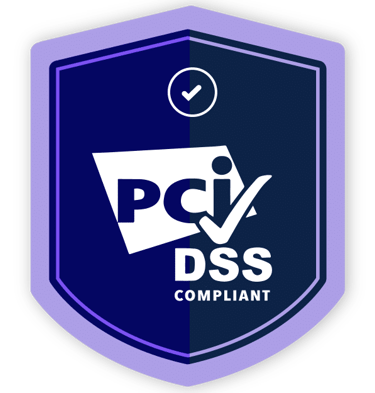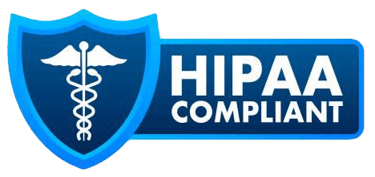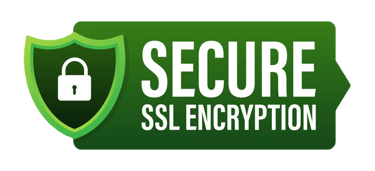The Role of QA Nurses in Ensuring Chart Compliance and Accuracy
Discover how QA Nurses play a critical role in ensuring chart compliance, documentation accuracy, and regulatory adherence in home health agencies under the Medicare Conditions of Participation (CoPs).
11/12/20255 min read
In the highly regulated world of home health care, quality documentation is more than just good practice—it’s a requirement under the Medicare Conditions of Participation (CoPs). Among the many professionals who uphold these standards, Quality Assurance (QA) Nurses stand at the forefront, ensuring every patient chart reflects accurate, compliant, and defensible clinical documentation. Their work not only protects agencies from regulatory risk but also enhances patient outcomes and operational efficiency.
Understanding the QA Nurse’s Role in Home Health
A QA Nurse, often referred to as a Quality Assurance/Performance Improvement (QAPI) Nurse, serves as the backbone of compliance and clinical accuracy within a home health agency. Their primary focus lies in the review, evaluation, and improvement of clinical documentation—ensuring that every note, assessment, and order aligns with the agency’s policies, payer requirements, and CoPs under 42 CFR §484.55, §484.60, and §484.65.
The QA Nurse bridges the gap between clinical care and administrative oversight by:
Monitoring nursing documentation for timeliness, accuracy, and completeness.
Identifying chart discrepancies or omissions that could lead to billing denials.
Educating clinicians on proper documentation standards.
Ensuring that each patient record supports medical necessity and the plan of care.
Collaborating with the Director of Patient Care Services (DPCS) and QAPI committee to track trends and outcomes.
Chart Compliance and Medicare Conditions of Participation
Under the Medicare CoPs, home health agencies must maintain accurate and complete patient records that clearly describe the patient’s condition, services provided, and measurable outcomes. QA Nurses play a key role in ensuring these records meet regulatory expectations, including:
Comprehensive Assessment (§484.55):
QA Nurses verify that the Start of Care (SOC) and follow-up assessments are completed on time, within the required 5-day window, and accurately reflect patient needs.Plan of Care (§484.60):
They ensure the plan of care includes all relevant disciplines, goals, and interventions, signed and dated by the physician. Any changes in the patient’s condition must be promptly reflected and communicated.Coordination of Care (§484.60(d)):
QA Nurses monitor interdisciplinary communication to confirm that services are coordinated among nursing, therapy, and aide services, ensuring consistency and accuracy.QAPI Program (§484.65):
Documentation errors, missed visits, or delayed orders often become QAPI indicators. QA Nurses use this data to identify trends, root causes, and opportunities for improvement.
The Importance of Documentation Accuracy
Accurate charting in home health is not just about meeting audit requirements—it directly impacts patient care and agency reimbursement. A single missing signature or unverified order can lead to claim denials, compliance citations, or repayment demands.
QA Nurses ensure accuracy by:
Conducting real-time chart reviews in the Electronic Medical Record (EMR).
Confirming all orders are properly signed and dated.
Reviewing medication reconciliation forms for completeness.
Ensuring each visit note supports the patient’s ongoing need for skilled care.
Checking that interventions and outcomes align with the plan of care.
Documentation accuracy also supports the agency’s Outcome and Assessment Information Set (OASIS) integrity, which influences reimbursement under the Home Health Value-Based Purchasing (HHVBP) model and Patient-Driven Groupings Model (PDGM).
Common Documentation Errors QA Nurses Prevent
Even experienced clinicians may inadvertently commit documentation errors. QA Nurses are trained to identify and correct the most common issues before they become compliance concerns:
Incomplete Visit Notes: Missing time in/out, vital signs, or skilled interventions.
Unsigned Orders or Plans of Care: A major compliance red flag that may invalidate the entire episode.
Late Documentation: Entries not completed within the required timeframe can affect clinical continuity and audit findings.
Inconsistent Clinical Narratives: Mismatched data between disciplines (e.g., nursing vs. therapy).
Omitted Physician Notifications: When a change in patient condition isn’t properly reported.
Through education and consistent follow-up, QA Nurses transform these risks into learning opportunities for staff.
Integrating QA Into the QAPI Program
The QAPI program, mandated under 42 CFR §484.65, requires agencies to continuously monitor and improve performance. QA Nurses play an essential role in this process by using chart audits and documentation reviews as key data sources for improvement projects.
QA Nurse QAPI Responsibilities Include:
Compiling monthly documentation error reports.
Presenting findings to the QAPI Committee.
Recommending policy updates or staff retraining.
Tracking corrective action plans for recurring deficiencies.
Ensuring continuous compliance with CMS and state requirements.
This cyclical process ensures that documentation standards evolve with regulatory updates and internal findings.
QA Nurse Collaboration With Interdisciplinary Teams
Effective QA processes rely on collaboration. QA Nurses work closely with the Director of Nursing (DON/DPCS), Clinical Supervisors, Therapists, Aides, and Physicians to maintain compliance.
They conduct:
Weekly or bi-weekly documentation audits.
Case conferences to review challenging cases.
Staff training sessions focusing on charting best practices.
Audit feedback meetings to ensure corrective action follow-up.
These collaborative efforts create a culture of accountability and transparency—core values emphasized in the CoPs.
Tools and Strategies for Chart Compliance
To streamline the QA process, agencies often adopt standardized tools and internal checklists developed in alignment with CMS and CDPH regulations. QA Nurses utilize:
Chart audit forms (tracking orders, signatures, and visit timeliness).
EMR compliance dashboards to monitor overdue or incomplete notes.
Internal corrective action logs for repeated deficiencies.
Education tracking sheets to ensure staff re-education compliance.
Additionally, many agencies partner with compliance consultants like HealthBridge, who provide external chart audits, mock surveys, and policy updates to reinforce internal QA processes.
Impact of QA Nurses on Survey Readiness
When a home health agency undergoes a state or Medicare survey, documentation becomes the cornerstone of compliance. Surveyors often review a random sample of charts to evaluate adherence to the CoPs. A proactive QA Nurse ensures:
All charts are complete, organized, and easily retrievable.
Orders, signatures, and corrections are compliant with policy.
Documentation of communication with physicians and caregivers is clear.
Clinical pathways demonstrate patient progress and goal attainment.
By maintaining a state of continuous survey readiness, QA Nurses reduce the risk of deficiencies under Tags G330–G336 (Clinical Records) and G510–G518 (QAPI Compliance).
The Educational Role of QA Nurses
Beyond chart reviews, QA Nurses function as educators, empowering staff to uphold best practices in documentation and patient care. They develop and deliver in-service sessions on:
Proper completion of OASIS and care notes.
Documentation standards for skilled nursing visits.
Timely and accurate physician order processing.
Correction and amendment procedures per policy.
By addressing documentation weaknesses through ongoing education, QA Nurses foster a learning environment that supports compliance and quality care.
The Future of QA in Home Health
As technology continues to evolve, QA Nurses are embracing data analytics and EMR-integrated compliance tools. Predictive analytics now allow agencies to identify high-risk charts before submission, reducing the likelihood of denials or survey citations.
Moreover, with value-based purchasing and PDGM reimbursement models, the role of QA has become more outcome-focused—requiring nurses to not only ensure accuracy but also evaluate documentation impact on patient outcomes and agency metrics.
Conclusion
The role of a QA Nurse in home health extends far beyond checking boxes or correcting notes. They safeguard the integrity of clinical documentation, uphold Medicare and state compliance, and drive continuous quality improvement across the organization. Through meticulous chart audits, staff education, and collaboration with interdisciplinary teams, QA Nurses ensure that patient care is accurately documented and agency operations remain compliant with federal regulations.
In an environment where even minor documentation errors can lead to significant financial and regulatory consequences, having a skilled QA Nurse is not optional—it’s essential.
For agencies seeking to strengthen their compliance infrastructure or implement a comprehensive QA and QAPI framework, HealthBridge offers expert consulting and management solutions. Our team assists home health and hospice agencies nationwide in maintaining chart compliance, optimizing documentation accuracy, and achieving full alignment with Medicare Conditions of Participation.

Some or all of the services described herein may not be permissible for HealthBridge US clients and their affiliates or related entities.
The information provided is general in nature and is not intended to address the specific circumstances of any individual or entity. While we strive to offer accurate and timely information, we cannot guarantee that such information remains accurate after it is received or that it will continue to be accurate over time. Anyone seeking to act on such information should first seek professional advice tailored to their specific situation. HealthBridge US does not offer legal services.
HealthBridge US is not affiliated with any department of public health agencies in any state, nor with the Centers for Medicare & Medicaid Services (CMS). We offer healthcare consulting services exclusively and are an independent consulting firm not affiliated with any regulatory organizations, including but not limited to the Accrediting Organizations, the Centers for Medicare & Medicaid Services (CMS), and state departments. HealthBridge is an anti-fraud company in full compliance with all applicable federal and state regulations for CMS, as well as other relevant business and healthcare laws.
© 2025 HealthBridge US, a California corporation. All rights reserved.
For more information about the structure of HealthBridge, visit www.myhbconsulting.com/governance
Legal
Resources
Based in Los Angeles, California, operating in all 50 states.






